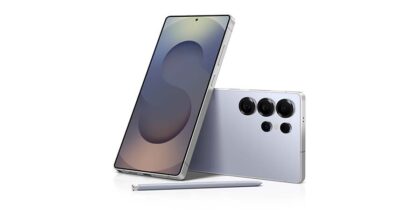Let’s start with the basics. When tackling mobile deployments for your employees — buying them mobile phones — you typically start with three fundamental choices.
First, you choose your preferred device, then you choose your carrier, and third you choose a mobile service plan. In the United States, this typically means locking your business into a multi-year carrier agreement with service charges; in exchange, you receive a subsidy on your phone purchase.
This subsidized phone acquisition model has been in place since the early days of cell phones, and has the advantage of spreading costs over the lifecycle of the device. But, increasingly both consumers and business customers are showing interest in the flexibility of unsubsidized, unlocked phones.
What is an Unlocked Phone?
With an unlocked phone, the device is not limited to accessing only one carrier’s network. Businesses can purchase the device from any number of resellers and IT solution providers and then shop around for a mobile service plan at the carrier of their choice.
Unsubsidized phones simply mean buying the device outright at the time of purchase at the full price of the hardware. That might sound like a bad deal, but it can be the opposite.
Discover the Benefits of Unlocked Smartphones
Here are four key questions to find out if unlocked smartphones are the answer for your employees. Download Now
A recent Gartner study points out that U.S. cellular providers offer domestic service discounts of 20 percent or more for plans used with unsubsidized phones. The report states, “Based on Gartner contract reviews, many large corporate customers remain unaware that the total cost of ownership (TCO) of service plans using unsubsidized devices is lower than those using subsidized devices… By year-end 2020, 25 percent of mobile phones purchased for U.S. corporate-liable plans will be unsubsidized, compared with less than 5 percent at year-end 2016.”
While for consumers, the upfront costs of a new mobile phone are often the primary consideration, for a business the total operational costs are often of greater importance. This does not mean that subsidized phones are a bad option for businesses, but they might not be the best option in every situation.
Bringing Customization to Enterprise Mobility
Based on this Gartner research, a quarter of enterprises will have dumped subsidized phones as a mobile deployment strategy by the end of 2020. Total cost of ownership is a big factor, but there are other drivers too. Unlocked and unsubsidized phones also provide enterprises with the opportunity to customize their mobile devices and purchase them together with additional services.
You can buy unsubsidized phones through channel partners and obtain management, support and other services directly through those partners, with whom you might already be purchasing other hardware and services. With unlocked phones, you will be buying phones with less “bloatware,” meaning pre-installed apps and software your employees don’t need or use. You’ll also be able to standardize on a single device model, but still allow employees to pick the carrier of their choice. Employees can even leverage pay-as-you-go service plans if travelling internationally. Lastly, some companies, such as retailers, hospitals or hotels, may not need cellular connectivity for employee phones if they are exclusively used on premise and connected to Wi-Fi.
For those companies that do require data plans, your channel partners can again provide additional value. They are proficient at negotiating on behalf of businesses small and large, and can help you work with your carrier(s) of choice to craft a plan that is flexible and customized to your needs.
Realigning Phones Within Your IT Strategy
Look at it this way: For some time, mobile phones have been a product category like no other. There are few other hardware purchases that are subsidized in this way. This acquisition model has shaped mobile deployment strategies and arguably led companies to adopt BYOD policies that pass on monthly service costs to employees.
But, in 2017, the mobile phone is such a core business tool. Employees use them to access key business systems and applications, so phones must be properly managed and secured.
Rolling out a corporate mobile program leveraging unlocked devices is a way to take back control of mobile computing across your workforce, and to begin treating mobile as a full-fledged component of your IT strategy.
The industry has been moving away from subsidized, locked mobile phone plans for several years. At Samsung, we perceive this industry shift mainly as an issue of choice. For many organizations, subsidized phones and even locked phones still make perfect sense. But that’s not true for all, and thus we need to provide alternatives.
Everything in business is moving towards speed, flexibility and choice. Mobile deployments should do the same.
See how enterprise mobility solutions are changing the way that employees work on a daily basis.









